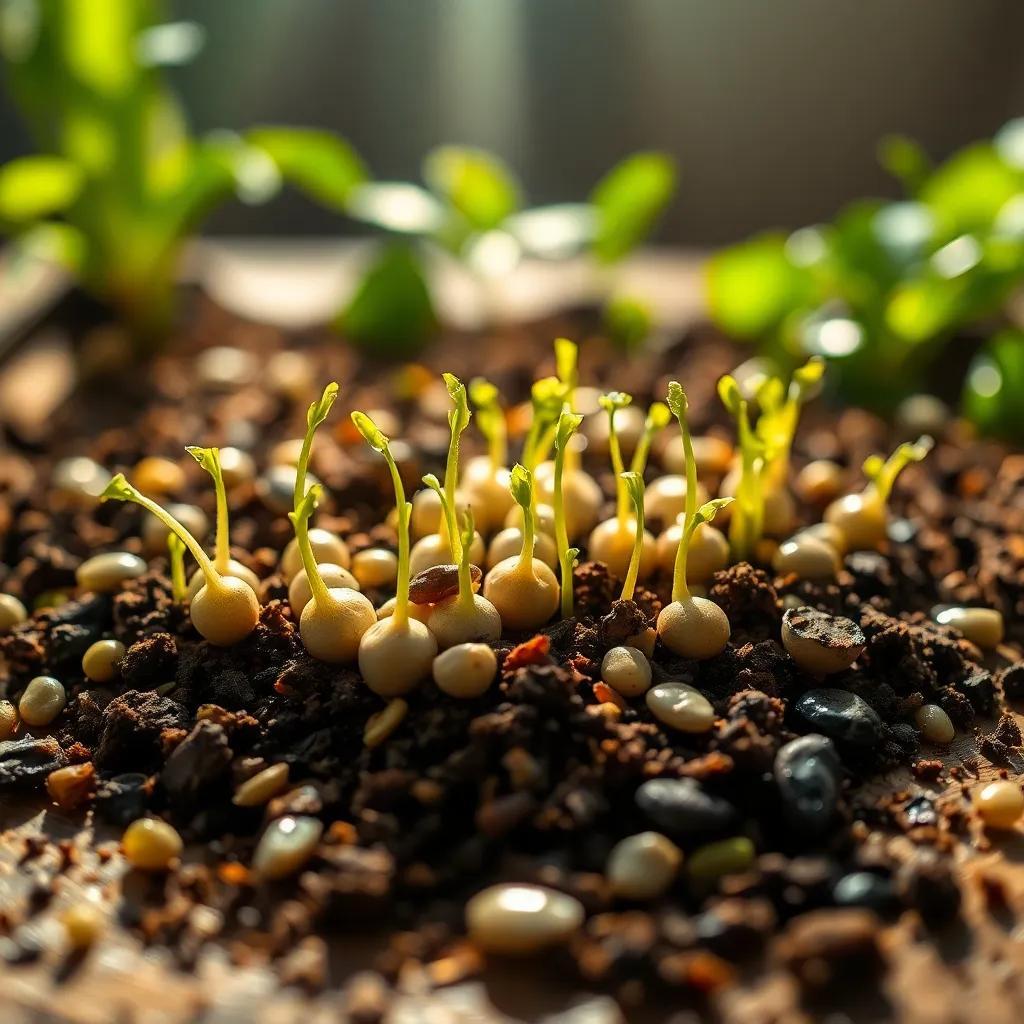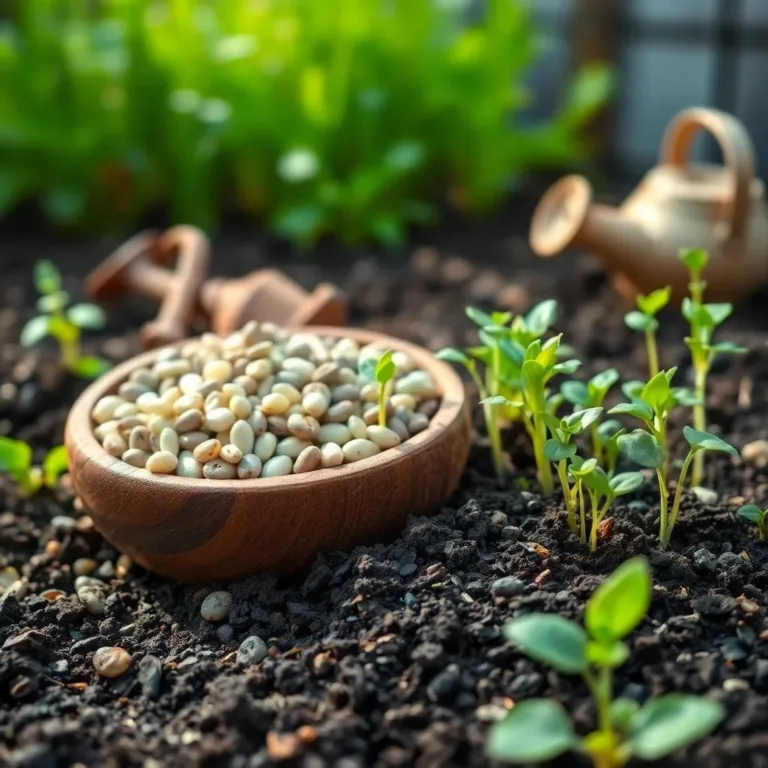Have you ever wondered how a tiny seed transforms into a lush plant? It’s like magic, but it’s all about science! Join me as we explore the fascinating journey of seed germination, from understanding dormancy to providing the best care for your growing plants. Let’s dig in and discover what it takes to help those little seeds thrive! 🌱
Factors Influencing Seed Germination Success
When it comes to germinating seeds, several factors come into play that can make or break the whole process. Just like baking a cake, if you don’t have the right ingredients, you won’t get the desired result! Here’s a quick look at what influences seed germination:
- Water: This is the superstar of germination! Seeds need moisture to wake up from their sleepy state. Without water, they can’t absorb nutrients or activate the enzymes that start the germination process. A good soaking can kick things off, but beware—too much water can drown them!
- Temperature: Think of the temperature as the cozy blanket for your seeds. Different seeds have varying temperature preferences. Some seeds thrive in warmth, while others prefer a cooler climate. Maintaining the right temperature range helps activate the enzymes that are crucial for growth.
- Light: Ah, the sun! For some seeds, a little sunlight does wonders, while for others, it’s all about the dark. Seeds that need light typically require specific wavelengths to jumpstart germination. Knowing whether to cover your seeds or leave them exposed is key!
- Oxygen: Just like us, seeds need to breathe! Oxygen is necessary for cellular respiration, which provides the energy seeds need to grow. Make sure the soil is not compacted, so oxygen can reach the seeds easily!
- Seed Quality: Not all seeds are created equal. Fresh seeds usually have a higher germination rate than older ones. Always check that your seeds are high quality, preferably from a reputable source.
By paying attention to these factors, you can set your seeds up for success! It’s all about creating the perfect environment for those little seeds to flourish into healthy plants. It feels great to be part of that growth process, doesn’t it?
The Role of Light in Seed Germination
Light plays a fascinating role in seed germination! It’s not just about throwing some seeds in the ground and hoping for the best. The right amount of light can be a game-changer! Let’s break down how light influences our green friends:
- Photoblastic Seeds: Some seeds absolutely need light to sprout! These are called photoblastic seeds. By activating phytochromes, light signals these seeds to germinate. You guessed it—if they’re buried too deep in the soil, they won’t get the light they crave! So, keep these seeds on top of the soil or just below the surface.
- Light-Sensitive Seeds: On the flip side, there are seeds that prefer to germinate in the dark. It’s like their ninja mode! These seeds often come from plants that naturally grow in shaded areas, like forests. They break dormancy in darkness and start to grow when the light conditions are right. Knowledge is power—knowing what your seeds need can make all the difference!
- Intensity Matters: The brightness of light matters too! Too little light won’t help photoblastic seeds, but don’t overdo it either! A gentle and diffused light works wonders for promoting healthy growth. Remember, even the smallest seedlings need just the right amount of light to begin their journey.
So, whether your seeds are light-hungry or prefer dark corners, recognizing their unique needs unlocks their potential. Armed with this light knowledge, you’ll be ready to create the best conditions for those little seeds to thrive! What a rewarding adventure! 🌱

Understanding Seed Dormancy and Its Types
Seed dormancy is like a cozy blanket for seeds, keeping them safe until the right moment to grow! It’s a smart survival strategy that helps seeds wait for just the right conditions before sprouting into life. Not all seeds are ready to grow as soon as they hit the soil. Let’s explore the different types of dormancy and what they mean for gardening:
- Physical Dormancy: This type usually happens when seeds have hard seed coats that prevent moisture from getting in. Think of it like a sealed jar that needs to be opened! Sometimes, seeds require a little help, like soaking in water or being scratched or scarified to break that tough coat.
- Physiological Dormancy: This involves internal factors where seeds have growth inhibitors, like hormones, that prevent them from sprouting until they are triggered by the right environmental cues. Imagine waiting for a light switch to be turned on—once the right conditions are met, they are ready to go!
- Morphological Dormancy: Some seeds have embryos that aren’t fully formed when they’re harvested. They need more time to mature before they can germinate, a bit like a cake that needs to bake a little longer in the oven!
Understanding these types of dormancy is key to successful gardening. By recognizing the specific needs of your seeds, you can help them break dormancy and get started on their journey to becoming beautiful plants!
Stages of the Germination Process Explained
Once the seeds shake off their dormancy, they jump right into action through the exciting germination process! This thrilling journey consists of several key stages that happen in a sequence. Here’s a quick rundown of those stages:
- Imbibition: This is the first step, where seeds soak up water like a sponge! They go from being dry and dormant to swelling up and getting ready for action. This is when they rehydrate the embryo and activate those superstar enzymes. It’s like waking up from a long nap!
- Activation of Enzymes: As seeds absorb water, they kickstart their metabolism. Enzymes break down stored nutrients—think of it as a tiny kitchen where seeds whip up the energy they need. These nutrients, like carbohydrates and proteins, are essential for fueling the next stages of growth.
- Growth of the Embryo: This is where the magic begins! The embryo starts to grow, with the radicle (root) pushing down into the soil, and the plumule (shoot) reaching up towards the light. It’s like a race where both parts are trying to find their place in the world!
- Root and Shoot Development: Once the root digs in and takes hold, the shoot continues its journey upward. Leaves start to form, and the plant begins its journey of photosynthesis, creating its own food and getting bigger every day!
By providing the right conditions—like moisture, warmth, and light—you can witness this amazing transformation from a tiny seed to a flourishing plant!
Best Practices for Encouraging Seed Growth
Getting your seeds to grow can be such a rewarding adventure! Here are some best practices to enhance seed growth and ensure they thrive in their new environment:
- Choose Quality Seeds: Start with fresh, quality seeds. Check their expiration dates and make sure they’re from a reputable source. Healthy seeds are the first step toward successful planting!
- Prepare the Soil: Healthy soil is like a buffet for seeds. Use a mix that provides good drainage and retains moisture. You can even add compost to enrich the soil with nutrients. Just think of it as giving your seeds a hearty meal to start with!
- Water Wisely: Keep the soil consistently moist, but don’t drown your seeds! Too much water can lead to rot. A gentle misting or using a watering can with a fine spout can help maintain the right moisture levels.
- Provide Proper Light: As we discussed earlier, light is vital for many seeds. Make sure your seeds get the right amount of light, whether that means placing them in a sunny spot or using grow lights!
- Control Temperature: Pay attention to temperature. Warmth can significantly influence germination rates. If you’re starting seeds indoors, consider using seed trays with a heat mat for an extra boost!
- Be Patient: Remember, good things take time! Seeds won’t sprout overnight. Check on them regularly, water them, and keep an eye on their progress without rushing them.
By following these simple best practices, you’ll be nurturing your seeds like a loving gardener, helping them grow into healthy, strong plants! Happy gardening! 🌿

